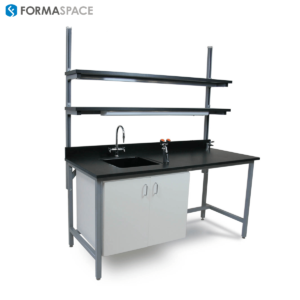If we had to go back in time to meet the builders of Stonehenge in England, what would we ask them? Would we ask whether the stones were purposefully aligned for the solstice? Perhaps we’d inquire about what kind of Druid festivals took place on the site. How long did it take to build the project? And so on… But perhaps the question we’d most like to ask creators of Stonehenge is whether they could they have imagined that thousands of years in the future there would be a generation — one that has traveled to the moon and back– still utterly captivated by the mystery of these stones.

Fortunately, Advances in Science and Technology Continue to Whet our Appetite for All Things Stonehenge
Over the past four years, a pan-European scientific consortium has been using the latest ground penetrating radar and other related technologies to investigate the site of Stonehenge and its environs. It turns out these stones were not as lonely as they might appear today. Just to the Northeast of Stonehenge is a large natural depression. Ground Penetrating Radar, Electromagnetic Sensing, Earth Resistance (electrical) measurements and Magnetometry have revealed significant discoveries for the archaeologists, anthropologists, historians and the public that are ever fascinated by Stonehenge’s secrets.
Austria’s Ludwig Boltzmann Institute for Archaeological Prospection and Virtual Archaeology is a major research partner in the scientific consortium studying Stonehenge. In the video below, they reveal a 3D reconstruction of their latest discovery: the Durrington Wall stones.

Scientists studying Stonehenge have used a variety of nondestructive inspection techniques. Let’s look at one in more detail: Ground Penetrating Radar. This technology is becoming more widely available thanks to advances in portable electronics and GPS systems. Operators can walk or push device that, in some cases, looks suspiciously like a lawnmower or a rototiller. Very precise odometers keep track of the operator’s position as they gather the data from the radar sensors. The tracks are often also confirmed by integrated GPS tracking systems.
The same techniques that are used to discover historical monuments at Stonehenge have many other practical applications, including detecting groundwater, identifying old pipe or buried conduits, finding voids under foundations and so on.
What About a WWII Era Nazi Train Purported to be Carrying a Fortune in Gold and Antiquities?
There have been long standing rumors that as World War II came to a close, German officials moved one or more trains carrying stolen money, gold, art and antiquities to the Owl Mountain range in today’s Southwest Poland and literally buried it underground.
Two private sleuths have reportedly claimed to have obtained secrets from a deathbed confession as well as ground penetrating radar results to locate one of the so-called Nazi Gold Trains.So far the present day Polish government is not commenting. We’ll believe it when we see it, but if true, it would be a powerful case study for using ground penetrating radar.
Jail Breaks and Tunnels in Mexico
A classic application would be using seismic sensor technology to detect if someone is burying under your facility. Financial institutions, sensitive infrastructure installations like power plants will find this useful. It could have been helpful to discover the tunnel that notorious Mexican drug trafficker “El Chapo” supposedly used in his escape from the shower of a high-security Mexican jail.
Speaking of Mexico, there are more reasons to investigate what lies beneath our feet than studying archaeology and discovering secret tunnels dug under jails. In many cases, there are natural tunnels and caverns underground. Mexico’s Yucatán Peninsula and the Florida peninsula are two examples where the underlying limestone geology is riddled with voids, posing a special risk to structures above. Called “cenotes” in Spanish, these caverns are popular among tourists visiting the Mayan Riviera in Cancun. However, last week, one of the cenotes collapsed under the weight of a newly constructed highway, blocking the route to the airport and delaying tourists for many hours.

In last week’s cenote collapse there were no known injuries, but that’s not always the case. Central Florida, unlike most of the Yucatán Peninsula, is highly developed with expensive real estate. A sinkhole caused by the collapse of limestone caverns underneath prime Florida real estate have been known to lead to tragic loss of life and significant financial losses — for destroyed homes, apartment buildings and commercial structures.
Unfortunately, ground penetrating radar has major technical limitations when measuring highly saturated soils or porous features, like limestone. So, understanding the structure in these areas relies on more traditional geological investigation processes. In Florida, spelunkers (cave explorers) get kitted out with scuba diving equipment and travel significant distances underground charting out limestone caverns. Those caverns with noticeable ceiling damage or close proximity to the surface are identified as the most dangerous to life and property on the surface. Scientists believe that as we extract more groundwater from these structures (something that is increasingly common due to recent widespread drought conditions) we might ourselves be contributing to the sinkhole problem in places like Florida.
What About Studying the Earthquakes Under Our Feet?
The US has several earthquake prone hot spots, including most of California, the Pacific Northwest, the area around Memphis’ New Madrid fault and a small but significant fault in the Charleston South Carolina region. In the past few years, residents of North Texas and the state of Oklahoma have been experiencing a new phenomenon: earthquakes in their backyard. There’s a lot of debate back and forth whether the heretofore “solid ground” has been impacted by oil and gas extraction using fracking technology. Out in California, UC San Diego and UNAVCO have been deploying a network of strain gauges to monitor earthquakes.
Scientific researchers tell us the calculations are not as simple as they would seem at first. To get a good reading on the relative strain within the rocks, calculations must take into account the pressure of the atmosphere, the groundwater level, and interestingly, the level of rainwater above the ground that occurs during localized flooding, such as from flash floods in the desert. Japan already has a pretty sophisticated network in place to warn the population about impending earthquakes.
Hopefully, we will have the same type of warning system available to the public in the coming years. It would be good to get a warning on our Android or Apple smart phone to dive under the desk. And here’s a good place to stop for now, as it’s time to tune in for today’s announcements from Apple Computer and their new line of iPhones, Apple television and one or two more surprises as well (we hope).
At Formaspace, We Are Interested in New Discoveries

We invite you to join the roster of satisfied Formaspace technical, manufacturing and laboratory furniture clients — including Apple Computer, Boeing, Dell, Eli Lilly, Exxon Mobile, Ford, General Electric, Intel, Lockheed Martin, Medtronic, NASA, Novartis, Stanford University, Toyota and more.
Give us a call today at 800.251.1505 to find out more about the Formaspace line of built-to-order computer workstations, industrial workbenches, laboratory furniture, lab benches and dry lab/wet labs — as well as our design / furniture consulting services. Like all Formaspace furniture, it’s backed by our famous 12 year, three shift guarantee.







